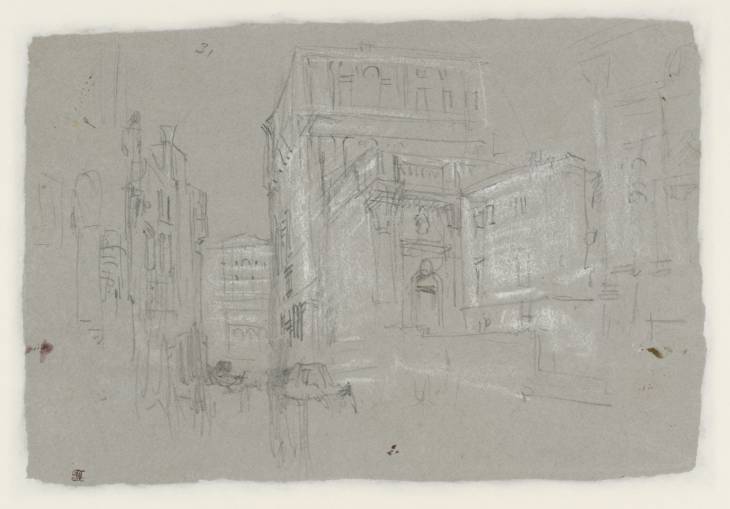1840
Andrew Wilton, Turner in the British Museum: Drawings and Watercolours, exhibition catalogue, Department of Prints and Drawings, British Museum, London 1975, p.136 under no.219, as ‘verso: a study in pencil and white bodycolour of the view in [Tate D32216; Turner Bequest CCCXVII 31; “Venice: The Palazzo Tasca-Papafava”, 1840]’.
1985
Lindsay Stainton, Turner’s Venice, London 1985, p.53 under nos.39 and 40, as Palazzo Tasca-Papafava subject.
2003
Ian Warrell in Warrell, David Laven, Jan Morris and others, Turner and Venice, exhibition catalogue, Tate Britain, London 2003, pp.158, 259, fig.164 (colour), as ‘San Luca and the Back of the Palazzo Grimani from the Rio San Luca’, 1840.
2004
Sarah Taft in Katharine Lochnan, Luce Abélès, John House and others, TurnerWhistlerMonet, exhibition catalogue, Art Gallery of Ontario, Toronto 2004, p.208 under no.83.

